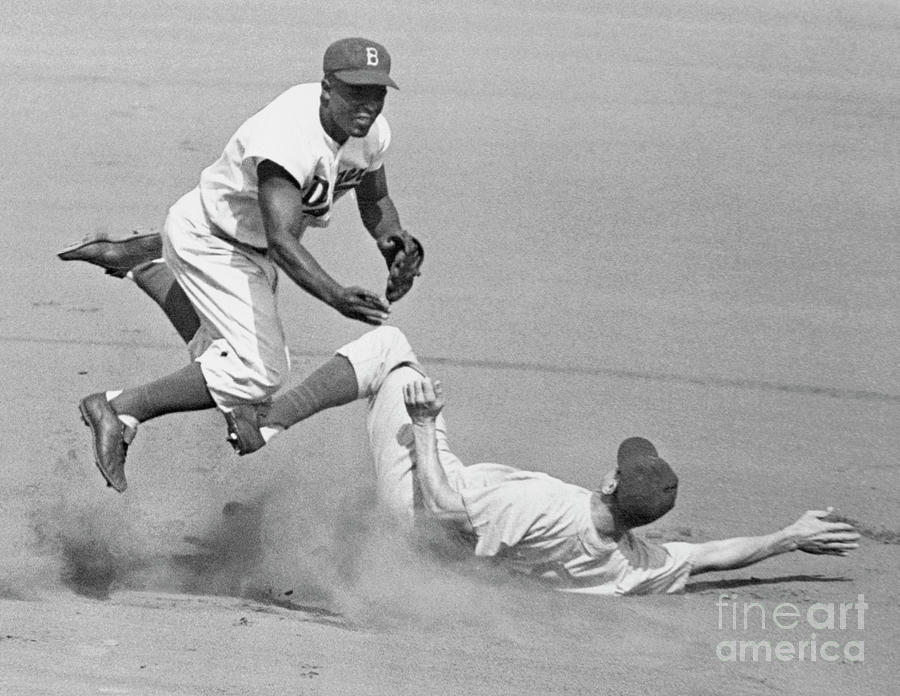Scroll Down to Read Today’s Essay
Subscribe to Baseball History Comes Alive for automatic updates. As a Free Bonus, you’ll get instant access to my Special Report: Gary’s Handy Dandy World Series Reference Guide!
We continue with Vince Jankoski’s extensive look into double plays and how they affect a team’s standings. Today, Vince examines teams that he calls “double-play machines,” and again looks for correlations. I think you’ll find Vince’s analysis interesting.
Vince Jankoski Takes A Very Deep Dive Into Double Plays! Part Two
Having given up on my attempt to prove a correlation between the number of double plays executed by a team and that team’s success or lack of it, I discovered four “double-play machines”: teams that over the span of several seasons cranked out a lot of double plays. Two of these teams were successful, indicating a positive correlation between double plays and winning baseball. One was up and down. And the fourth was a losing team.
Moving chronologically, the first “double-play machine” is the easily overlooked Philadelphia Athletics. The A’s led the American League in double plays each year from 1949 to 1951. In 1949, they finished 5th, 8 games over .500. They finished last the following year, losing 102 games in a 154-game season. They moved up to 6th thereafter, 14 games under .500. Their double-play efficiency did not seem to affect their place in the standings.
The Athletics surrendered their double-play title to the Yankees who led in six of the next seven years (1952-1958), capturing the pennant in all but one of those years. The only year in which New York did not lead in double plays was 1953 when they were second in the league in twin killings.
Then, there is the Brooklyn Dodgers. During the late 1940s to mid-1950s, the Dodgers were almost as dominant in the National League as the Yanks were in the American. From 1947 to 1956, the Yankees won eight pennants. The Dodgers won six, plus they lost the pennant on the last day of the season twice. Give the Dodgers a couple of more wins over a couple of seasons and they, too, win eight pennants in ten years. That is dominance unprecedented in the game.
Like the Yankees in the 1950s, the Dodgers were a double-play machine. The Dodgers were second in the National League in double plays in 1949, led in 1950 and 1951, were second in 1952, and tied for 3rd (with 2 other teams) in 1953. So, they produced a lot of double plays.
Both the Yanks and Bums support a correlation between winning and double plays, my original but now discarded goal.
Lest someone think that, pointing to the 1950s Yankees and Dodgers, something happened post-1950 to begin to correlate double plays with winning baseball, consider the Pittsburg Pirates from 1957 to 1968. During those years, the Pirates were in double plays, respectively, with finishes in the standings in parentheses 4th (last), 2nd (2nd), 1st (4th), 1st (won pennant), 1st (6th), 1st (4th), 1st (last), 1st (7th), 1st (3rd), 1st (3rd), 1st (6th), and 2nd by a single twin killing (6th). They finished first and second once each, third and fourth twice each, sixth three times seventh once, and last twice, all while leading or nearly leading the league in double plays. There is not much correlation there, but at this point, who cares? What was going on in Pittsburg during these years? They had double-play dominance unmatched in baseball history. That is not hyperbole.
Also, from 1960 to 1968, the last season before divisional play began, the pattern (or lack of it) maintained, notwithstanding the Dodgers and Yankees of the 1950s. In the American League, league leaders in double plays finished in the standings 1st, 2nd, 3rd, and 5th once each, 6th twice, and 7th, 8th, and last once each. Pennant winners were 1st, 2nd, or 3rd once each, 4th twice, 5th or tied for 5th twice, and 7th twice in double plays. In the National League, league leaders in double plays finished 1st once, 3rd twice, 4th once, 6th twice, and 7th once and last twice. while pennant winners were 1st , 4th and 7th once each, 8th four times, 9th and last once each.
Please take note that the 1966 to 1972 Baltimore Orioles are not on my list of “double-play machines”. They had one of the best infields of all time. In 1966 and 1967, the Oriole infield consisted of Davey Johnson (5 career gold gloves), Brooks Robinson (16 career gold gloves), and Luis Aparicio (9 career gold gloves). From 1968 to 1972 Aparicio was replaced with Mark Belanger (8 career gold gloves). The Orioles were a good team, winning pennants in 1966, and 1969 to 1971, yet did not lead the league in double plays in any of those seasons. So, go figure.
In the next installment, I move from the team “double-play machines” to the individual players on those “double-play machines” in an attempt to identify “DP superstars”. There will be at least one surprise. It should be fun.
Vince Jankoski
Subscribe to our website, Baseball History Comes Alive with over 1400 fully categorized baseball essays and photo galleries, now surpassing the one million hits mark with 1, 090,000 hits and over 900 subscribers: https://wp.me/P7a04E-2he

